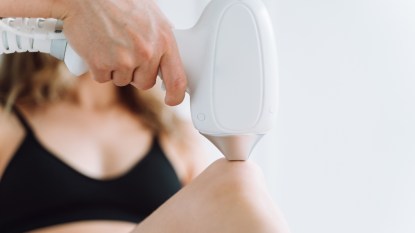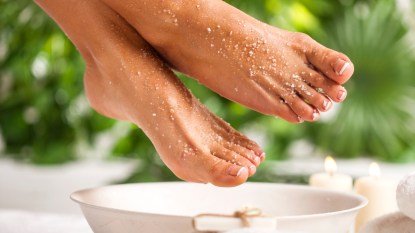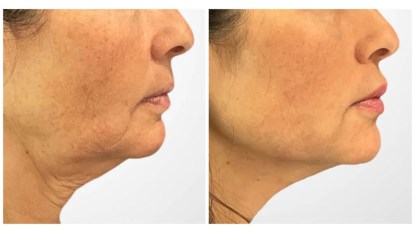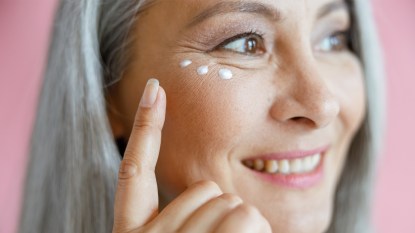How to Apply Self Tanner Without Staining Hands + Easy Ways To Remove It if You Do
Common household helpers are all it takes to remove the orange stain from hands

No need to splurge on an island vacation or spend days baking in the sun to achieve a sun-kissed glow. Thanks to new developments in self tanners, all that’s required is a few minutes of application and in no time you’ll look like you just stepped off the plane from St. Tropez. Not only can applying these creams, lotions or oils help you look a golden-shade of refreshed, they’re inexpensive and easy to use. If you’ve ever applied self tanner, however, you know the one tell-tale sign that your tan is fake: Self-tanner-stained palms. That’s why we asked the experts for the best way to apply self tanners and how to get self tanner off your hands if you do make a mistake.
What are self tanners?
Self tanners are any product that gives the skin a tanned appearance without any exposure to the sun. These products use dihydroxyacetone (DHA), a color additive that darkens the skin by reacting with amino acids on the skin’s surface.
The advent of these skin-dying products in the 1960s meant that anyone who strived to be a bronzed beauty no longer had to bake in the sun’s harmful rays. Around this time, skin cancer (melanoma) was officially linked to sun exposure, so folks were getting educated and looking for other alternatives. It wasn’t until the 1970s that the FDA approved the ingredient that helped give our skin its faux glow. And while we know some amounts of sunshine are good for us to provide necessary Vitamin D, the rise in skin cancer rates sent people to the drugstore in droves for an array of fake tanning lotions, oils, foams and creams in order to learn how to apply self tanner.
When self-tanners gained popularity in the 1980s, women still weren’t as readily reaching for them because they’d often give skin an orange tint instead of the desired shade of glowing brown.
But beauty chemists have since perfected the formulas as the market and demand for them exploded in popularity. Besides the obvious health benefits of sunless tanners versus tanning beds or the sun, they can also be a quick and easy way to look pleasantly bronzed before a special event or vacation.
What are the different types of self tanners?
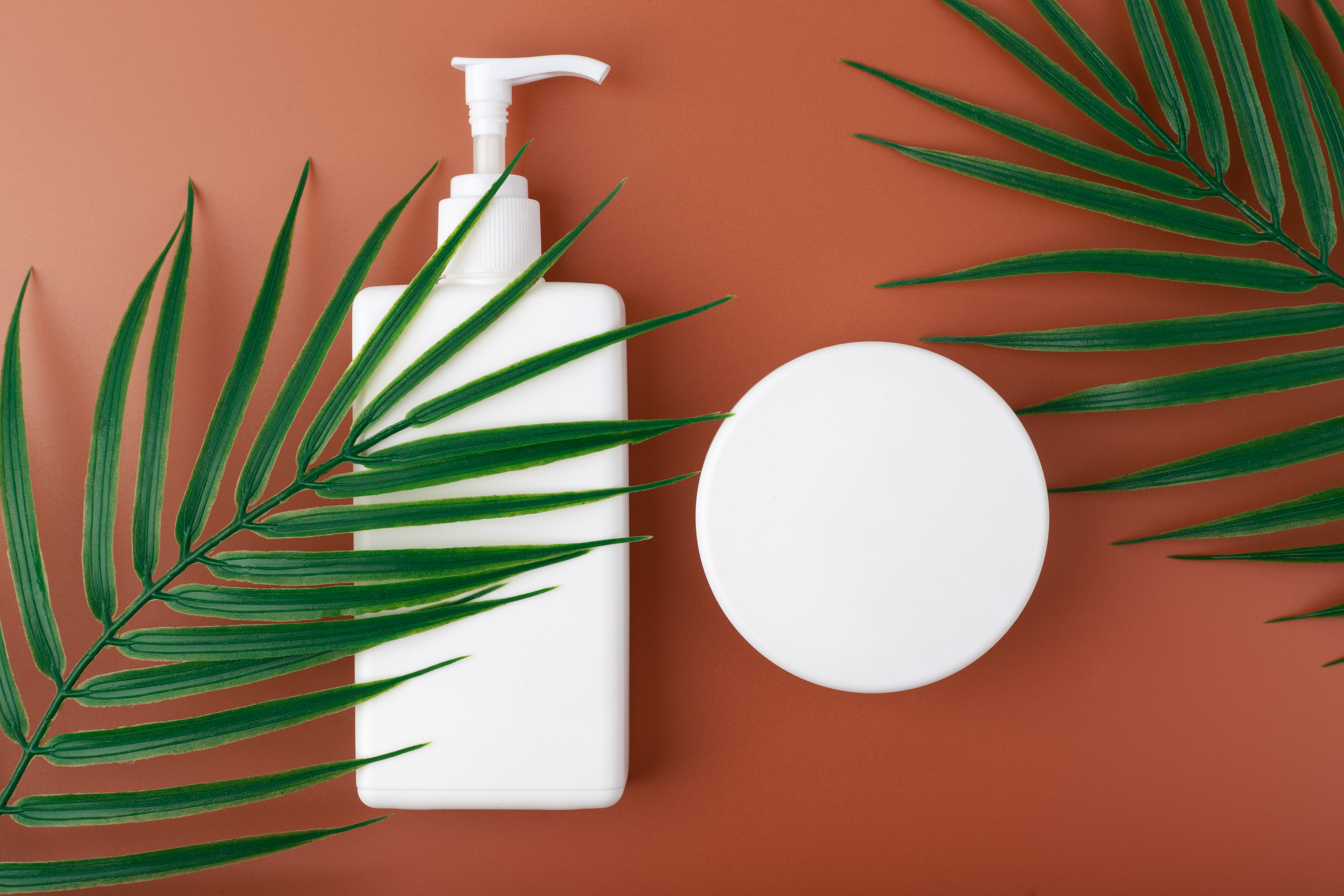
There have been plenty of innovations in the sunless tanning market over the last six decades, and now there’s a variety of options for people looking for a quick tan.
- Spray tans: This is a form of self-tanning in which a fine mist is sprayed onto your body, usually via an airbrush gun or a machine you step into. It typically lasts from 3-7 days. This can be the priciest option, costing anywhere from $25-$50 or more.
- Self-tanning mousse: A mousse or foam formulation is often used as it’s lightweight and quickly absorbs onto the skin. You can find these for under $10 at the drugstore.
- Self-tan towelettes: Towelettes with the tanning serum soaked into them are popular because you can simply wipe them onto the skin, and voila! They’re easy to use and travel with.
- Drops, sprays, lotions and mists: You can find self-tanning products in all these other easy-to-use formulations on drugstore shelves.
Over 50? Check out our sister publication’s story on The 10 Best Self-Tanners for Mature Skin.
How to apply self tanner
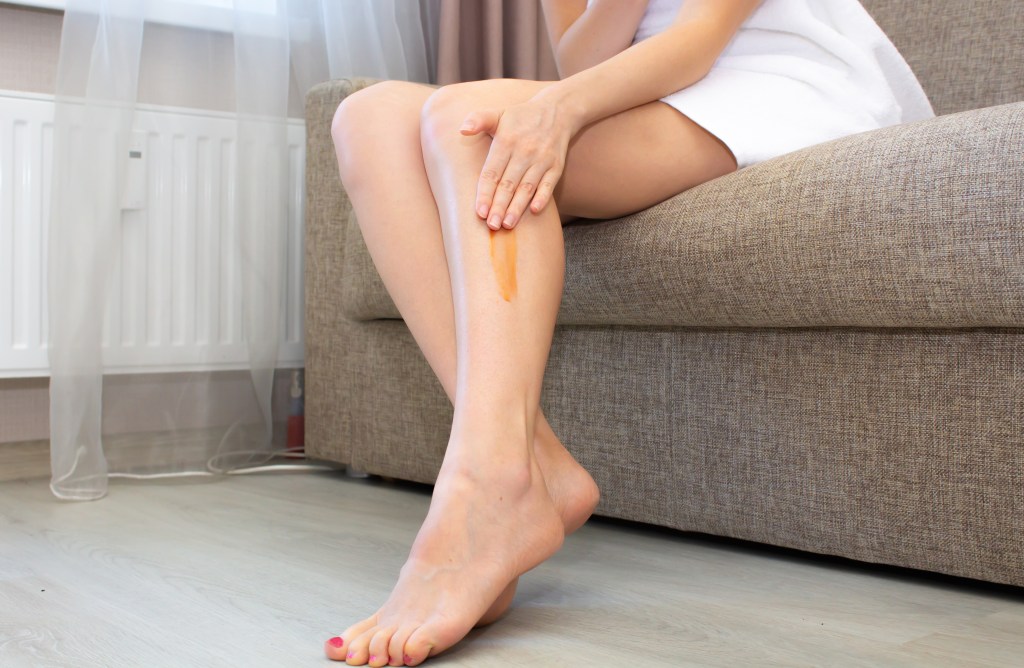
The first thing you’ll want to do before applying any sunless tanning product is to properly prep the skin by exfoliating thoroughly. Shedding dead skin will prevent the product from concentrating or clinging to some areas more than others (so you don’t end up with a blotchy and uneven tan!). Then, simply follow the directions on the product label and you should be good to go.
As far as keeping it from getting all over your hands, “You can use gloves or a tanning mitt, but most women will just use their hands,” says Megan O’Brien, beauty entrepreneur and founder of Ring My Belle, an on-demand beauty services app based in Charleston, SC. If you decide to use your hands, you can simply wear rubber gloves, but if you go without, O’Brien advises washing your hands immediately after with soap and water to prevent the tanner from developing there. “You’ll want to dry your hands thoroughly, especially between the fingers where tanner can seep in and on your palms.”
How to get self tanner off your hands
You know how to apply self tanner, but despite your best efforts, you still ended up with it on your hands. One of the more common reasons? Some formulas go on invisible and darken as the day goes on — so even when you thought you washed it all off of your hands, turns out you didn’t. Here, savvy answers to how to get self tanner off your hands according to beauty experts. Best of all, most of these methods use things you likely already have in your home:
- Lemon juice: O’Brien recommends making a mixture of equal parts coconut oil and lemon juice and scrubbing it onto palms using a pumice stone to effectively slough off self-tanners from hands. “However, it’s important to be cautious on the areas you use the pumice stone as it can be harsh on the skin.”
- Baby wipes: According to Oyster Bay, NY-based aesthetician Rachel Lee Lozina of the Blue Water Spa, baby wipes can wipe away the signs of unwanted tan. “Just be sure to use a little bit of elbow grease as this gentler method might not be as effective as some others,” says Lozina.
- Depilatory creams: “The same compounds in the cream that break down hair proteins also remove a blotchy self-tan,” says New York City dermatologist Debra Jaliman, MD. Simply apply a pea-size amount of the cream onto palms. Let sit for 5 to 10 minutes, then rinse.
- Exfoliating mitt: If you pick up one of these for your pre-tan prep, you can use it again to buff away the over-tanned areas on your hands.
- Rubbing alcohol: Rubbing alcohol that you have around your house can also be effective in a pinch, explains Merry Thornton, PA-C, a board-certified physician’s assistant practicing in New Canaan, CT. “Apply alcohol to a cotton ball and rub the area with firm pressure. Wash your hands immediately afterward and moisturize as alcohol can be drying.”
- White Vinegar: White vinegar is another common household item that can remove unwanted tanning products because of its acidity. Use it like you would rubbing alcohol, but let it sit for a few minutes on the skin before washing it off.
- Hydroquinone: A commonly prescribed chemical that combats hyperpigmentation in the skin, is also used by some people for this purpose, says Thornton, as it essentially bleaches the areas it’s applied to. Side effects of this medication can include dryness, redness, and irritation, and you will need a prescription to get it.
Here’s a YouTube video outlining some other surprising methods you can try!

Jené Luciani Sena is a veteran journalist and internationally-renowned bestselling author of The Bra Book: An Intimate Guide to Finding the Right Bra, Shapewear, Swimsuit, and More! and Get It!: A Beauty, Style, and Wellness Guide to Getting Your #It# Together. She’s also a style, bra and beauty expert regularly seen on shows like Access Hollywood and NBC’s Today.
A version of this article originally appeared in our print magazine, First for Women.



